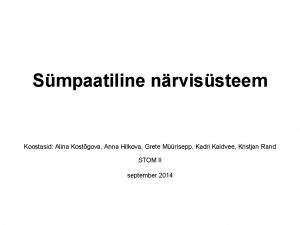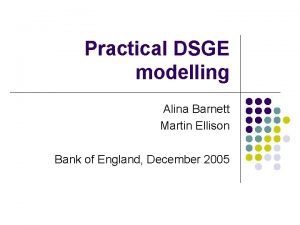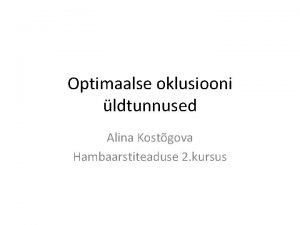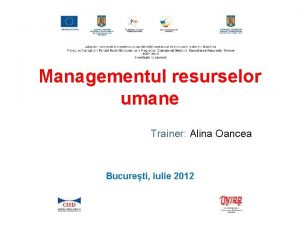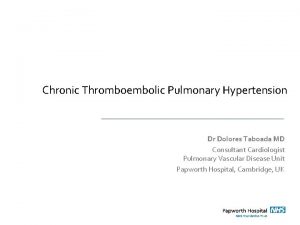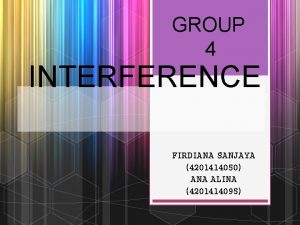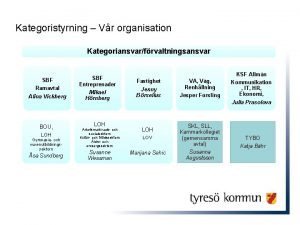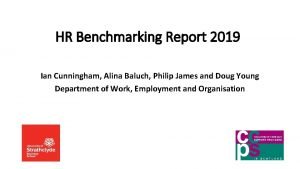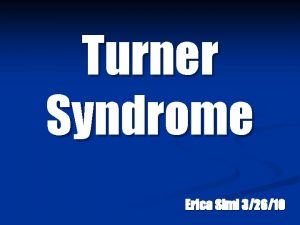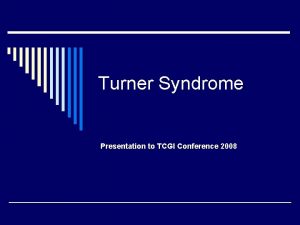System Planning 101 ALINA TURNER PHD TURNER RESEARCH

































- Slides: 33

System Planning 101 ALINA TURNER, PHD TURNER RESEARCH & STRATEGY INC. Turner. Researchand. Strategy. Inc. com

“ Shifting from a program -by-program to a systems approach to ending homelessness. Restructuring our approach to homelessness following the Housing First philosophy. ”

Background Calgary Homeless Foundation – CE in Calgary; led 10 Year Plan to End Homelessness in 2008 based on Housing First. From 2008 -2012 went from: Virtually no program funding to overseeing $35 M investment, From no Housing First to programs for 4, 000 clients, 5 staff to 35 staff. Housing First spurred massive growth and learnings. Drawing on Alberta experience in 7 Cities implementing Housing First housing over 7, 000 clients and US Communities of Care best practices.

Overview Key components of a Homeless Serving System Implementation Ask learnings from Alberta clarifying questions throughout Time for discussion at the end

Homeless-Serving System Local or regional system for serving those who are homeless or at imminent risk of homelessness Method of organizing and delivering homeless services appropriate to client needs Organizations working together towards the same goal of ending homelessness Ensuring individual programs contribute to system success Tangible metrics to determine program and system success, and examine how funds are expended

System Planning Aims Clients Policy Makers & Funders Service Providers

11 Key Elements Purposeful development, design and management of homeless serving system to end homelessness through : 1. Plan to End Homelessness 2. Backbone Organization 3. Community Engagement 4. System Structure 5. Standards of Care 6. Coordinated Intake & Assessment 7. Performance Management 8. Homeless Management Information System 9. Technical Assistance 10. Embedded Research 11. Systems Integration

1. Systems-focused Plan to End Homelessness Community plan aligned with system planning using Housing First. More than introducing Housing First programs. Sets out strategy to transform local service continuum using Housing First approach.

2. The Backbone Organization leading the Homeless. Serving System to drive Plan goals. Usually the CE or lead agency implementing Plan to End Homelessness. Requires transformation of role – including funding processes, performance management, engaging community differently, policy advocacy, etc.

Lead Organizations Calgary Homeless Foundation Non-profit funder, owns and operates supportive & affordable housing Manages federal, provincial funds 35 staff, $35 M Medicine Hat Community Housing Society The Community Partnership, DC Non-profit funder & social housing provider 3 staff oversee homelessness portfolio 30 staff, $50 M $3 M

3. Community Engagement A transparent process to identify system gaps and priorities that community includes key stakeholders. Service providers & system partners engaged in formal system planning process & funding allocation. Client committee integrated in decisionmaking process to allocate funds and plan services.

4. Defined Structure Agreed-upon program types across the Homeless-Serving System using common definitions. Articulates relations between components.

Homeless Population 80% transitionally homeless 10 -15% episodically homeless 5 -10% chronically homeless

Acuity & Homelessness Patterns Low acuity – Transitionally homeless • Interventions often focus on rapid rehousing, prevention, & access to mainstream supports. Moderate acuity – Episodically homeless • Interventions focus on treatment, housing stabilization & reducing the frequency of homelessness spells. High acuity – Chronically homeless • Interventions focus on permanent housing stabilization and intensive supports.

Programmatic Building Blocks 1. Prevention 2. Outreach 3. Emergency Shelter 4. Transitional Housing 5. Rapid Rehousing 6. Intensity Case Management 7. Permanent Supportive Housing 8. Affordable Housing 9. Other Support Services

Program Building Blocks Outreach Coordinated Entry Housing First ICM Permanent Supportive Housing Transitional Housing Emergency Shelter Affordable Housing Other Support Services

Calgary Homeless. Serving System Prevention Affordable Housing Emergency Shelters Outreach Rapid Rehousing Short-Term Supportive Housing Support Services Only Housing & Intensive Supports Permanent Supportive Housing

5. Standards of Care Agreed upon standards, policies and protocols to guide program and system operations including: referral processes, eligibility criteria, service standards, client engagement, privacy, safety, etc.

Standards Implementation System Standards Program Standards for entire system to adhere to; e. g. : Program-specific standards, e. g. : Prioritization tools (SPDAT, VI, Acuity Scale, etc. ) Emergency shelters Triage protocols Outreach services, etc. Housing quality standards Client engagement in services Eligibility criteria Case management

6. Performance Management Performance expectations at the program and system levels aligned and monitored to drive Plan targets. Evaluates system’s impact on target populations. Articulates what the system aims to achieve. Illustrates the level of performance expected of everyone. Empowers clients through participation in quality assurance activities at program and system level. Promote service integration across sector and with mainstream systems.

Performance Measures System Measures Examines how the entire system addresses a particular measure of effectiveness. Improves the system’s planning and structure. Key Indicators • Occupancy • Destinations at Exit • Return to Homelessness • Interaction with Public Systems • Income Gains at Exit • Length of Stay/ Stability Program Measures Focus on client measures of success. Often different depending on program type. Tie directly to clients’ progress in programs.

Benchmarking Point of reference from which programs can be evaluated against similar program types within homeless serving system and with best performers regionally. Allows for analysis of data collected on system and program levels. Presents standards and that can be applied or adapted as best practices. Tailored to program type, yet able to generate system-level trends. Can be used to pin-point trouble areas and resolve these systematically.


7. Coordinated Intake & Assessment Common processes to ensure appropriate program matching, consistent prioritization, and streamlined flow of clients across Homeless-Serving System. Single place or process for people to access housing services. Provides information, screening, referral, and intake through one or multiple sites.

Benefits of Coordinated Intake Simplifies access to services for clients Improves referrals Initiates client record, consent & intake into HMIS Operationalizes common intake and prioritization process Improves client targeting for system impact Enhances agency collaboration

8. Homeless Management Information System Shared information system that aligns data collection, reporting, system planning, common intake, assessment, referrals and service coordination in Homeless-Serving System. Client-level, system-wide information over time on characteristics and services needs. Web-based software applications to enter and share client-level data across agencies.

What is HMIS? Web based application Collaborative planning tool Security and privacy standards similar to online banking to benefit the non profit sector Includes case management, bed utilization, resources directory, information & referral, research & system planning

More than a database HMIS allows communities to implement and undertake system planning using real time data. Agencies can track progress at client level, while funder can assess system performance. Allows for unduplicated count of shelter population longitudinally to assess program gaps. Fundamental infrastructure to track how clients move through homeless serving system.


9. Technical Assistance Capacity building support to service providers and mainstream system key partners in areas including: system planning, HMIS, program and system performance management, and aspects of Standards of Care.

10. Embedded Research Commitment to evidencebased decision-making and planning, built into backbone organization and community's approach to system planning.

11. Systems Integration A focus on integrating the Homeless-Serving System with public and community services, including justice, child intervention services, health, poverty reduction, etc. Justice Poverty Reduction Health Homeless Serving System Income Assistance Education Children’s Services

Alina Turner, Ph. D Turner Research & Strategy Inc. E: turneralina@gmail. com T: 403 -827 -8722 W: turnerresearchandstrategyinc. com
 Dr. alina turner
Dr. alina turner Dr alina webber
Dr alina webber Soor ehk
Soor ehk Indiaanlaste noolemürk
Indiaanlaste noolemürk Alaina orlova
Alaina orlova Alina luca
Alina luca Zona centkiewicza
Zona centkiewicza Alina smirnova
Alina smirnova Alina barnett
Alina barnett Alina kostõgova
Alina kostõgova Alina oancea
Alina oancea Cteph
Cteph Alina niculita
Alina niculita Www.youtube.com videos para niños
Www.youtube.com videos para niños The story of teddy bears go back to 1902
The story of teddy bears go back to 1902 Alina kozarkiewicz
Alina kozarkiewicz No interference alina
No interference alina Alina
Alina Oracle of delpi
Oracle of delpi Alina tryfonidou
Alina tryfonidou Alina fokina
Alina fokina Alina kostõgova
Alina kostõgova Alina fokina
Alina fokina Alina vickberg
Alina vickberg Alina baluch
Alina baluch Alina orlova dog
Alina orlova dog Alina padeanu
Alina padeanu Alina smirnova
Alina smirnova Alina sbirlea
Alina sbirlea Alina wajda
Alina wajda Dr alina tiraspolskaya
Dr alina tiraspolskaya Alina baumann
Alina baumann Dr alina tiraspolskaya
Dr alina tiraspolskaya Dr. calin carmaciu
Dr. calin carmaciu



